Nikon Nikkor AF-S 80-400 mm f/4.5-5.6G ED VR
4. Image resolution
Let’s check how the tested lens compares here; the graph below shows its performance in the frame centre at 80, 200, 300 and 400 mm focal lengths.
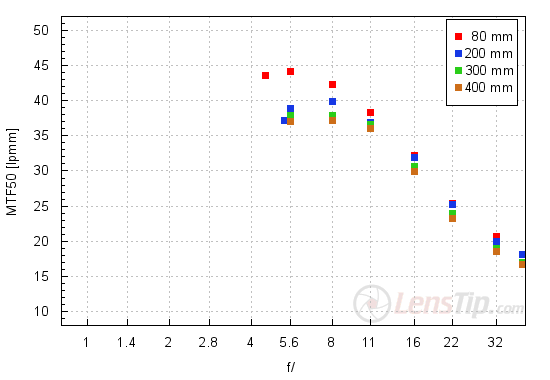
Please Support UsIf you enjoy our reviews and articles, and you want us to continue our work please, support our website by donating through PayPal. The funds are going to be used for paying our editorial team, renting servers, and equipping our testing studio; only that way we will be able to continue providing you interesting content for free. |
- - - - - - - - - - - - - - - - - - - - - - - - - - - - - - - - - - - - - - - - - - - - - - - -
At the shortest focal length the lens fares exceedingly well. At the maximum relative aperture and by f/5.6 you get very high MTFs reaching near 44 lpmm. The longer end of the focal range is a bit worse but still very even. The maximum relative aperture provides results near 37-38 lpmm so noticeably above the decency level. After slight stopping down the MTFs increase to even 40 lpmm at 200 mm and 37 lpmm at the maximum focal length.
How the direct rivals fared here? The new Canon EF 100–400 mm f/4.5–5.6L IS II USM was more even: at 300-400 mm focal lengths it could still reach 40 lpmm. Mind you it managed to do so on the sensor of the EOS 5D MkIII which provides MTFs on average by 1-2 lpmm lower than those you get from the D3x. The Canon clearly prevails at the longer end but at the shortest focal length the Nikkor is better.
Longer focal lengths of the Nikkor seem to be also worse than those of the huge Sigma S 150–600 mm f/5–6.3 DG OS HSM which, at 300 mm, was able to reach 45 lpmm and at 450 mm it got to 39 lpmm. In its case the test was performed on the EOS 5D MkIII so in order to compare it to the Nikkor directly you have to add at least 1 lpmm.
Now let’s see how the Nikkor AF-S 80–400 mm VR fares on the edge of the smaller APS-C/DX sensor.
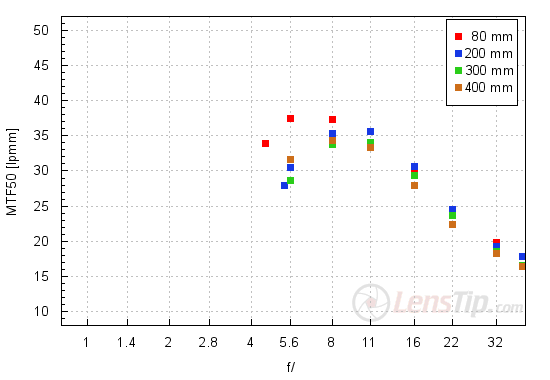
The MTFs are here noticeably lower than in the frame centre but still you can see differences between the 80 mm focal length, which is very good, and the 200-400 mm range. Overall there are almost no reasons to complain. At longer focal lengths and with the lens wide open the resolution level oscillates around 30 lpmm and on stopping down it can increase to about 35 lpmm.
The Nikkor loses to the Canon once again as its rival’s performance is very even - at the maximum relative aperture the Canon’s MTFs are on a level of 36-37 lpmm. The Sigma S 150-600 mm seems a bit better as well – at 450 mm it can reach 36 lpmm.
At the end we present the performance of the tested lens on a very demanding edge of full frame. Just take a look at the graph below.
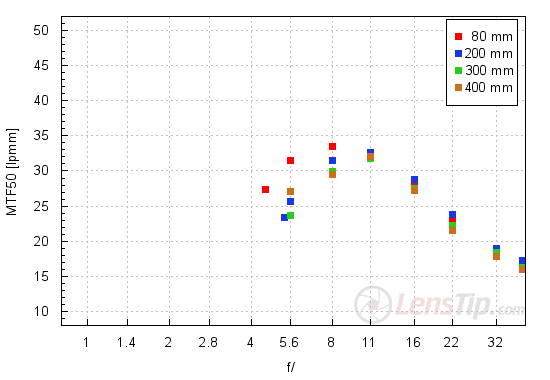
Here you might have plenty of reservations. First of all the lens, while wide open, is not able to reach the decency level at any focal length. It fares noticeably worse than the Canon 100-400L II which exceeded that level at all focal lengths. On the other hand the Nikkor finally can defeat the Sigma S 150-600 mm as that lens could get only as high as 32 lpmm and at the maximum relative aperture it never exceeded the decency level either.
To sum up: the Nikkor AF-S 80–400 mm f/4.5–5.6G ED VR is a very sharp and a very good lens but certainly not such an outstanding instrument, resolution-wise, as the Canon EF 100–400 mm f/4.5–5.6L IS II USM. In order to defend the Nikkor you might mention here the fact that it has a bit wider focal range so the constructors had a more difficult task. The maximum magnification ratio of that lens amounts to 5x whereas the appropriate value for the Canon and the Sigma is just 4x.
At the end of this chapter, traditionally, we present crops taken from photos of our resolution testing chart, saved as JPEG files.
| Nikon D3x, JPEG, 80 mm, f/5.6 |
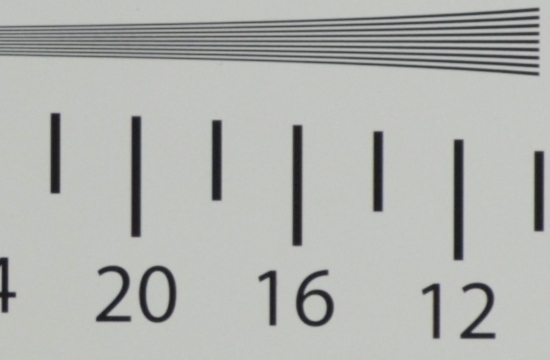 |
| Nikon D3x, JPEG, 400 mm, f/5.6 |
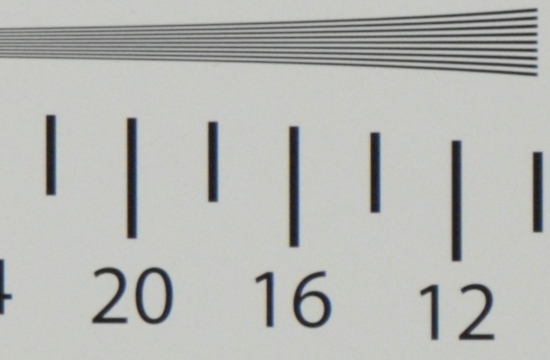 |






